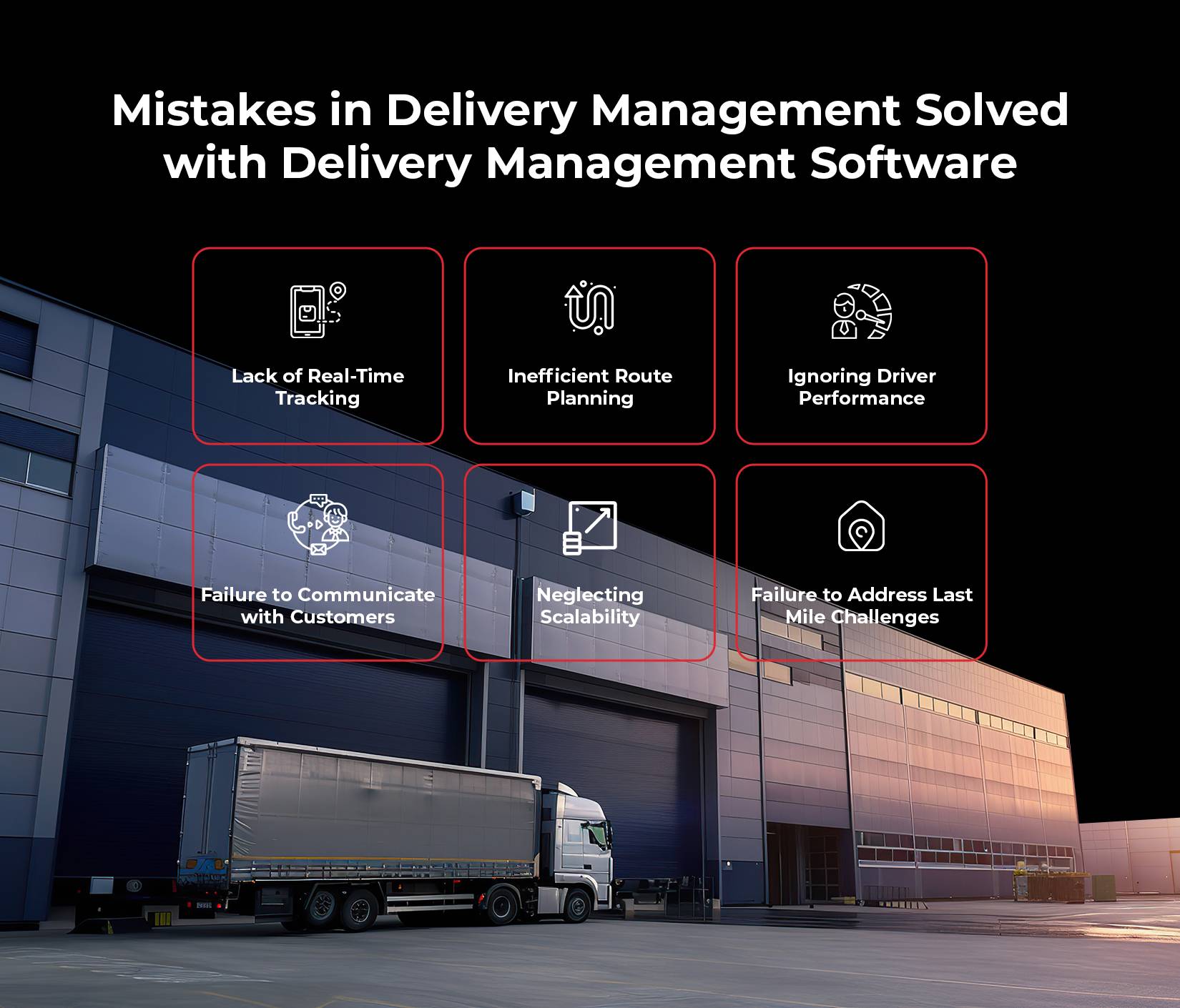
Common Mistakes to Avoid in Delivery Management Using Delivery Management Software
In today’s fast-paced logistics environment, effective delivery management can make or break a company’s success. As businesses strive to meet increasing customer expectations, ensuring streamlined delivery processes becomes crucial. Yet, many organizations continue to make avoidable mistakes that impact efficiency, costs, and customer satisfaction. This blog will address six common delivery management errors and how to prevent them. By avoiding these mistakes and leveraging the best delivery management software, businesses can optimize operations and stay competitive.
What is Delivery Management Software?
Delivery management software is a digital solution designed to streamline and automate the entire process of managing deliveries. It enables businesses to plan, execute and track deliveries in real-time. Additionally it also helps in reducing costs and improve customer satisfaction. Key Features typically include route planning, real-time tracking, delivery scheduling and automated communication with customers.
The software helps companies efficiently manage multiple delivery fleets, reduce fuel consumption and minimize delivery delays. By improving transparency and accountability, delivery management software enhances the overall efficiency of the supply chain, making it an essential tool for logistics and e-commerce businesses.
Mistakes in Delivery Management Solved with Delivery Management Software

1. Lack of Real-Time Tracking:
One of the most significant errors in delivery management is the absence of real-time tracking. Without the ability to monitor the exact location of vehicles and parcels, companies face a myriad of issues. Issues like delayed deliveries and poor customer communication. According to a recent survey, 96% consumers say that delivery tracking is important to their shopping experience.
Implementing a delivery management software with real-time GPS tracking allows businesses to keep customers informed, make timely adjustments and ensure accountability from drivers. This not only enhances customer satisfaction but also provides valuable data for route optimization and future planning.
2. Inefficient Route Planning:
Poor route planning is a common yet costly mistake in delivery management. Inefficient routing results in higher fuel consumption, longer delivery times, and increased operational costs. Businesses that still rely on manual route planning or outdated systems struggle to keep up with the demands of last-mile logistics.
To avoid this, companies need to invest in the best delivery management software that offers advanced route optimization features. Modern software can analyze multiple factors, including traffic conditions, delivery windows, and vehicle capacity, to create the most efficient routes. Statistics show that optimized routing can reduce delivery costs by up to 20%.
3. Ignoring Driver Performance:
Many companies overlook the importance of tracking driver performance, which can lead to inconsistent delivery outcomes. Without proper performance monitoring, its challenging to identify areas where drivers need improvement or where they excel. Poor driver behavior such as speeding or inefficient driving can increase fuel consumption and risk delays.
A comprehensive delivery management solution can help monitor driver performance through metrics like delivery time, fuel efficiency and compliance with safety regulations. By leveraging these insights, companies can implement training programs and reward top performers, fostering a culture of continuous improvement. This not only increases delivery efficiency but also reduces costs associated with poor performance.
4. Failure to Communicate with Others:
Clear and timely communication with customers is essential for successful delivery management. Many companies make the mistake of not providing enough updates or failing to set realistic delivery expectations. This leads to frustration and damages customer loyalty.
A robust delivery management software can automatically send real-time notifications to customers regarding their delivery status, estimated arrival times, and any potential delays. According to industry data, 83% of customers are less likely to return to a company after a poor delivery experience. Therefore, proactive communication is key to maintaining customer trust and ensuring repeat business.
5. Neglecting Scalability:
As businesses grow, their delivery operations much evolve to handle the increase in demand. A common mistake is failing to implement scalable systems and processes early on, leading to bottlenecks when volume speaks.
Investing in scalable delivery management software ensures that businesses can handle seasonal demand increases, geographic expansion, or changes in product offerings without compromising delivery quality. In fact, companies that fail to scale their delivery operations risk losing customers to competitors that offer faster and more reliable services. Scalability is crucial for maintaining efficiency and controlling costs as the business grows.
6. Failure to Address Last Mile Challenges:
The last mile of delivery is often the most expensive and difficult to manage. Mistakes in this crucial phase can result in delayed deliveries, increased costs and unhappy customers. A Capgemini report suggests that the last mile can account up to 53% of the total delivery cost.
Utilizing, a delivery management software that optimizes last mile logistics will help with the mistake. This also ensures that the final leg of the delivery is smooth, efficient and cost effective.
Quick Read: 7 Best Delivery Management Software
Conclusion
Avoiding these five common delivery management mistakes can greatly improve operational efficiency, reduce costs, and enhance customer satisfaction. Real-time tracking, efficient route planning, performance monitoring, proactive communication, and scalability are critical components of a successful delivery strategy.
Businesses should adopt the LogiNext Delivery Management Software, the best delivery management software to stay competitive in the ever-evolving logistics landscape. By leveraging the right tools and avoiding these pitfalls, companies can create a robust delivery management system that meets both operational and customer demands. Click on the red button below to know more.
43






@LogiNext